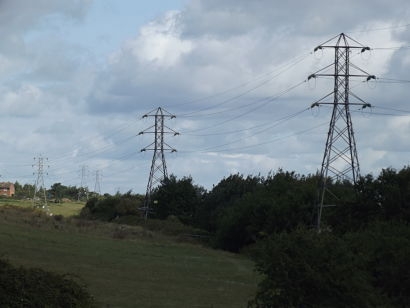
The decarbonisation of the power sector is accelerating through the rapid expansion of low marginal cost renewable generation. As a result, the current electricity market design and the marginal price-based determination of the price of power risk acting as an ever-growing barrier to investment needed to fulfil the net zero ambition, and may need to be reformed.
Current electricity market design – which relies on the marginal plant setting the price – means that wholesale prices will increasingly become influenced by zero marginal cost generators, such as variable renewables. Long-range power price forecasts understandably reflect the level of renewables required to reach legally binding climate targets, and the depressing effect of this on projected prices could act to discourage the development of new low carbon capacity, particularly if investment returns rely on wholesale power assumptions. So, this is not just a problem for tomorrow when lower prices are realised, but an issue for today when modelling expected prices.
Due to this, Cornwall Insight suggests that there is a strong case for the government to consult with industry on whether the current market design needs to be rethought so that it can deliver the net zero ambitions, whilst maintaining the wider and important functions that power markets perform.
To exemplify, the report unpacks four high-level models to achieve these objectives, and that may form part of this consultative process.
The four designs proposed include:
A Firm Energy Revenue Model (FERM) – A system where every generator is guaranteed to receive a firm income for each MWh produced. This value is determined in a competitive tender; the wholesale market remains in place for short-term delivery.
An Energy Floor Price Model (EFPM) – Every generator is guaranteed to receive at least their floor price for each MWh produced. This value is determined in a competitive tender; the wholesale market remains in place for short-term delivery.
A Regulated Asset Base model (RAB) – Every generator is guaranteed a minimum annual revenue, determined in advance through competitive tenders. The wholesale market remains in place, and revenues are trued up after each year.
A Market Driven Cost of Service Model (MDCSM) – A central plan is determined, and capacity is procured through competitive tenders, the market operator dispatches capacity in price order and owners of capacity are guaranteed revenue each year.
In evaluating these models, Cornwall Insight identifies the EFPM as most likely to encourage an environment of investor confidence, whilst maintaining much of the dispatch efficiency of the current market. However, noting this is a complex issue with long lead times to reforms, the report recommends the government opens dialogue now with interested stakeholders on both the scale of the challenge and possible solutions.
“Inevitably, as we head closer towards a net zero economy, a significant proportion of the electricity mix will come from low marginal cost renewable resources” said Tom Edwards Senior Modeller at Cornwall Insight. “As a result, there will be periods where renewables will be the marginal generator on the system, and the wholesale price will clear near zero. Long-range power forecasts, if they reflect the change in the generation mix to allow for this transition, will also capture this effect and be priced into investor models today. Therefore, the current wholesale market risks providing a reducing incentive to investment at the level required to meet the net zero target. This would be most felt for investment in power projects that are partially or fully reliant on wholesale power price revenues. There are also possibilities that this could be exacerbated further with the requirements for electrification of heat and transport.
Even if we don’t get to net zero, the attempt will see this phenomenon intensify, so it less about the destination of decarbonisation and more about the trajectory and the influence of the ambition on the depth and pace of change. We do not think this is just a theoretical issue, but rather one that will increasingly cause headaches for investors, developers, and policymakers sooner than we think if not examined properly.
We think that it is appropriate to open up the debate now about whether a new market design or another intervention outside the wholesale electricity market is needed, particularly as the ask on investors’ is only going to grow and making changes to power markets is not a quick or easy process.
From our high-level assessment, the EFPM scored relatively highly on investor confidence, capacity adequacy and optimal investment and benefits from keeping the market participants exposed to real-time pricing. It appears relatively easy to implement. But there will be other options too, outside those we cover in the paper, and we think it is important that government considers engaging with interested parties in the industry on their take on the magnitude of the challenge and possible solutions sooner rather than later.”
For additional information:

